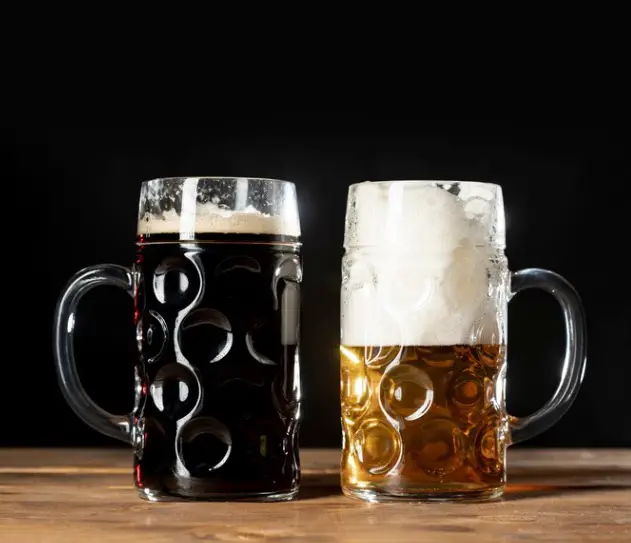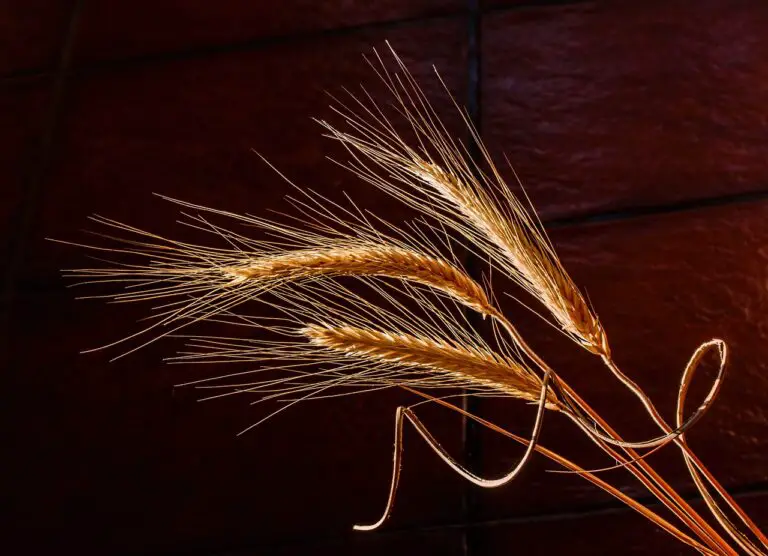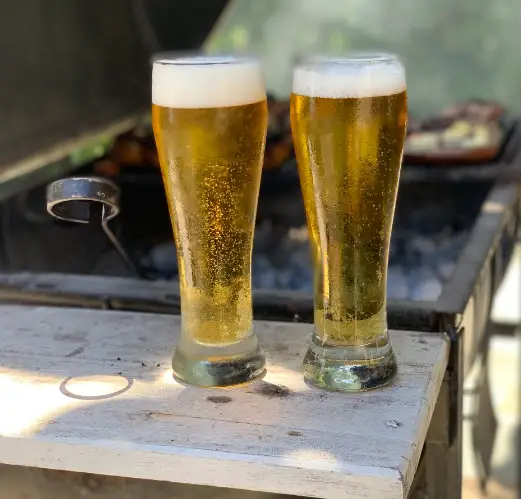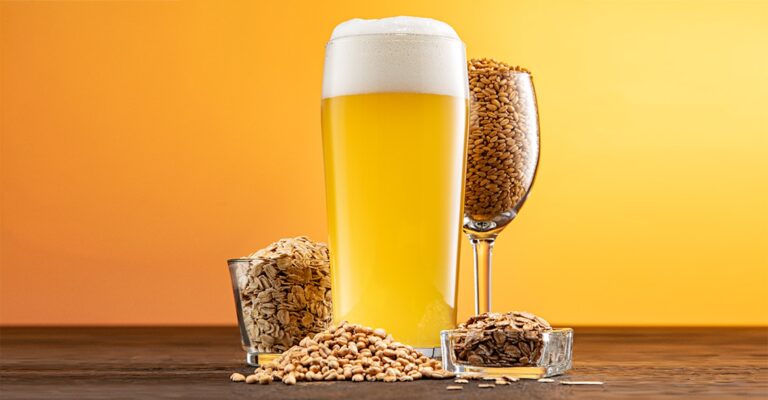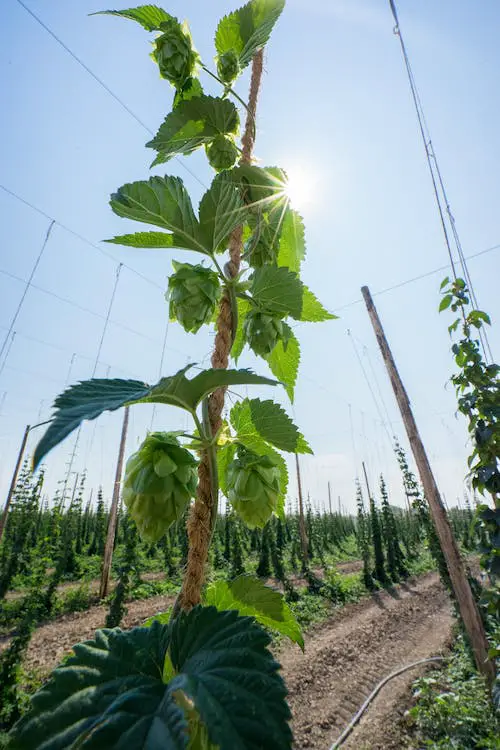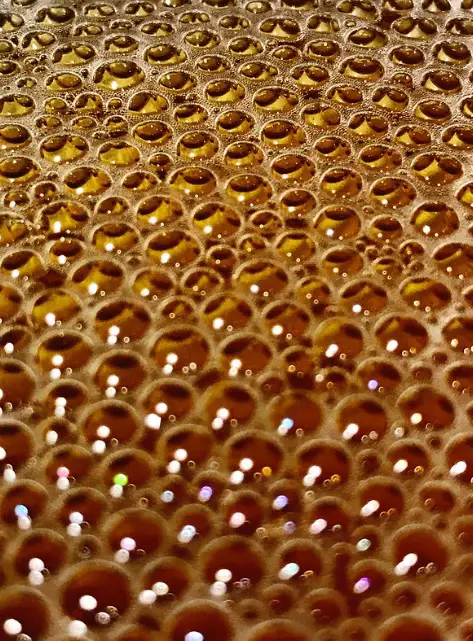Does Every Beer Have Hops?
So, does every beer have hops? I bet you didn’t know this, but…
No, not every beer has hops. While hops are a key ingredient in many beers, some traditional and experimental brews intentionally exclude hops.
Historically, before the widespread use of hops, various herbs, spices, and other bittering agents were used to flavor and preserve beer. Contemporary brewing has a growing trend of crafting beers without hops, often using alternative ingredients for unique and diverse flavor profiles. So, whether it’s a classic recipe or an innovative creation, only some beers rely on hops for their distinctive taste.

The Role of Hops in Brewing
Introduction to Hops in Brewing
- Definition: Hops are the cone-shaped flowers of the Humulus lupulus plant, primarily used in brewing for their flavor, aroma, and preservative properties.
- Purpose: Hops play a crucial role in shaping the sensory profile of beer and extending its shelf life.
Flavor and Aroma
- Distinctive Characteristics:
- Each hop variety contributes unique flavors and aromas to beer, ranging from floral and citrusy to earthy and spicy.
- Impact on Beer Profiles:
- Different combinations and quantities of hops create a spectrum of beer styles, allowing brewers to tailor the sensory experience.
Bitterness
- Bittering Compounds:
- Hops contain alpha acids that, when boiled during brewing, impart bitterness to the beer.
- The level of bitterness is measured in International Bitterness Units (IBUs).
- Balancing Act:
- Bitterness counters the sweetness of malt, creating a harmonious balance in the overall flavor profile.
Different Varieties of Hops
- Hop Varieties:
- Hops like Cascade, Centennial, and Saaz offer distinct characteristics.
- Dual Purpose and Single Purpose Hops:
- Some hops are versatile, contributing both bittering and aroma, while others specialize in one aspect.
Preservative Properties
- Historical Preservation:
- Historically, hops were added to beer for their natural preservative qualities, reducing the risk of spoilage.
- Modern Brewing Practices:
- Hops inhibit the growth of undesirable microorganisms, enhancing the beer’s stability and shelf life.
Impact on Sweetness
- Counteracting Sweetness:
- Bitterness from hops offsets the sweetness derived from malted grains.
- This counterbalance contributes to the complexity and drinkability of the beer.
Challenges in Brewing Without Hops
- Flavor Profile Concerns:
- Brewing without hops poses challenges in achieving the complexity traditionally associated with hopped beers.
- Preservation Methods:
- Alternative preservation methods must be explored to compensate for the absence of hops.
Hops-free Beers – Why?
Historical Context of Hops-Free Brewing
The origins of hops-free brewing hark back to ancient civilizations where the use of diverse herbs and spices took precedence over the now-ubiquitous hop. Mesopotamian and Egyptian brewers, crafting libations in an era predating hops, relied on locally abundant ingredients like myrtle, mugwort, and heather to infuse their brews with distinct flavors. Notably, the medieval European tradition of gruit, an herbal blend featuring sweet gale, yarrow, and juniper, underscored the prevalence of botanical alternatives.
What is Heather?
Calluna vulgaris, commonly known as heather, is a hardy and low-growing shrub native to Europe and Asia. Renowned for its vibrant and diverse display of tiny, bell-shaped flowers, heather is often cultivated for its ornamental beauty in gardens and landscapes.
Its evergreen foliage and distinctive hues, ranging from shades of pink and purple to white, make it a popular choice for adding color and texture to gardens. Additionally, heather is utilized in traditional herbal remedies for its purported medicinal properties, including anti-inflammatory and diuretic effects. Furthermore, heather is associated with cultural significance in various regions and is often used in bouquets, symbolizing admiration and good luck.
These historical practices, rich in resourcefulness and botanical diversity, offer a compelling narrative of how brewers, long before the dominance of hops, harnessed the elements of their surroundings to create uniquely flavored beverages, leaving an indelible mark on the ancient art of brewing.

Ancient Beer Recipes Without Hops
Ancient beer recipes predating the use of hops showcased a diverse array of botanical ingredients to impart distinct flavors and aromas to the brew. Myrtle, mugwort, and heather were prominent components in these historical concoctions.
In civilizations such as Mesopotamia and Egypt, brewers turned to the local abundance of these herbs to achieve bitterness and aromatic complexity in their beers. These ancient recipes, featuring myrtle, mugwort, and heather, offer a glimpse into the creative and resourceful ways in which societies crafted flavorful and aromatic beverages long before the widespread use of hops.
Experimental Brewing Techniques Without Hops
Modern experimental brewing techniques have ushered in an era of creative exploration, leading brewers to delve into alternatives to hops for crafting distinct and innovative beers. Ingredients like lavender, ginger, chamomile, and a myriad of other herbs have become key players in this novel approach.
Brewers are leveraging these botanicals to introduce unique flavors and aromas, resulting in diverse beers that challenge traditional norms. Lavender adds a floral and slightly sweet note, ginger brings a spicy kick, while chamomile contributes a subtle herbal character.
The artful combination of these ingredients, often called botanical brewing, yields beers that defy expectations, inviting enthusiasts to savor a tapestry of flavors beyond the hop-centric palate. This experimental frontier not only expands the possibilities within the craft beer landscape but also encourages a reimagining of the traditional brewing process.

Challenges of Brewing Without Hops
Brewing without hops presents a set of distinctive challenges that brewers must navigate to achieve a balanced and flavorful end product. One primary concern lies in the complexity of the flavor profile. Hops contribute not only bitterness but also a spectrum of aromas and flavors that are deeply ingrained in the traditional beer palate. Without hops, brewers face the task of sourcing alternative ingredients that can replicate or complement these characteristics, ensuring the beer remains interesting and enjoyable.
Preservation is another critical challenge. Hops, with their natural antimicrobial properties, play a key role in extending a beer’s shelf life by inhibiting the growth of undesirable microorganisms. Brewers crafting hops-free beers need to explore alternative preservation methods to maintain the stability and quality of their brews, preventing premature spoilage.
Additionally, brewing without hops requires a meticulous selection of substitute ingredients. Finding the right balance between various herbs, spices, or botanicals to achieve bitterness without overpowering the beer’s other elements demands a nuanced approach. Striking this balance becomes even more crucial when aiming to produce beers that cater to evolving consumer preferences for unique and diverse flavor profiles.
Wrapping It Up – The Future of Hops-free Beer
The future of hops-free beer takes on an exciting and dynamic trajectory. The resurgence of ancient recipes and the burgeoning interest in experimental brewing techniques without hops signal a shift toward greater diversity and innovation within the craft beer landscape.
While hops remain a cornerstone of traditional brewing, the growing popularity of hops-free beers speaks to an industry that embraces creativity, challenges conventions and seeks to satisfy evolving consumer palates. The future of beer without hops holds the promise of a nuanced and expanded flavor spectrum, where botanicals, herbs, and spices intertwine to craft libations that reflect both historical brewing traditions and contemporary ingenuity.
As craft brewers continue to push boundaries, the journey into the world of hops-free beers unfolds as a captivating exploration, promising a future where the pint glass is filled with a kaleidoscope of flavors, inviting enthusiasts to savor the ever-evolving tapestry of brewing possibilities.

I am a young architect with a passion that goes beyond blueprints… it’s beer! undertherosebrewing.com is more than just a blog, it’s a manifestation of my lifelong dream to explore, read, and learn everything about beer. Join the blog on this unfiltered and genuine adventure into the heart of beer culture. Cheers!

